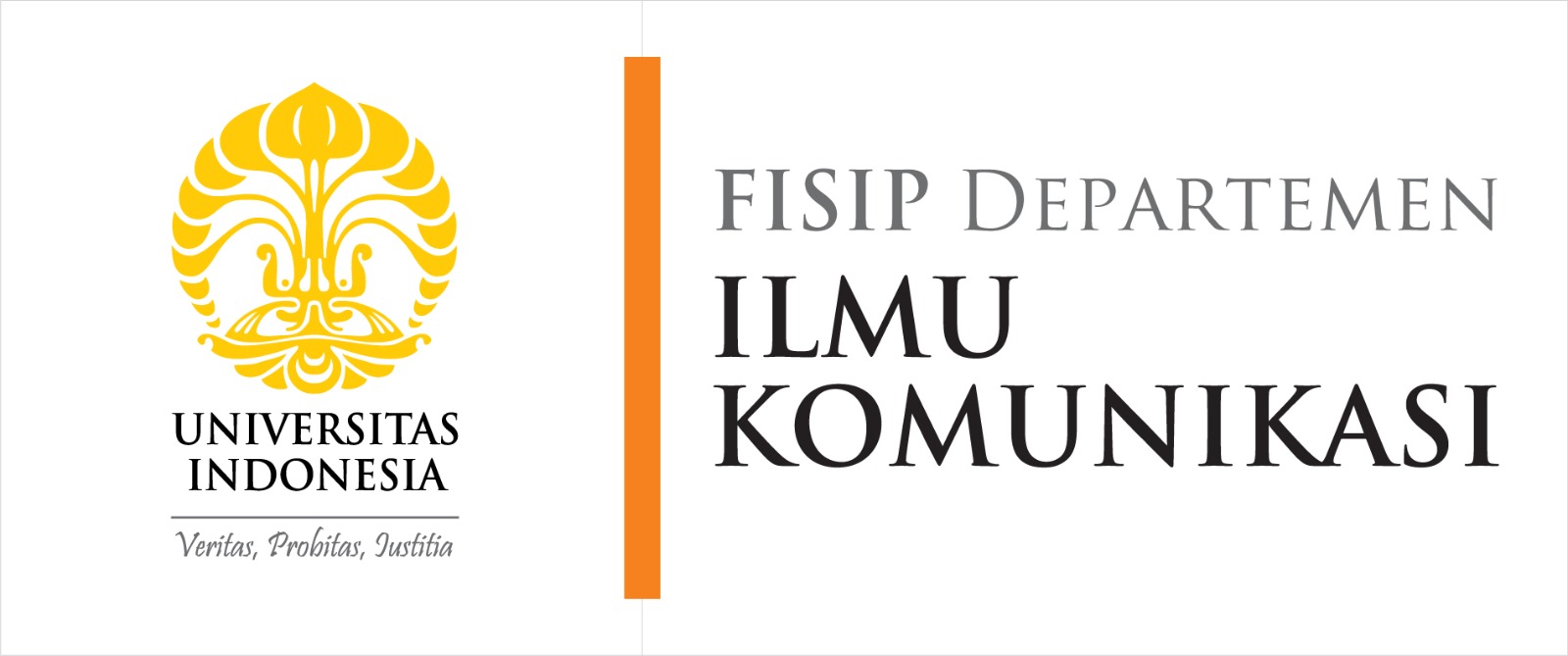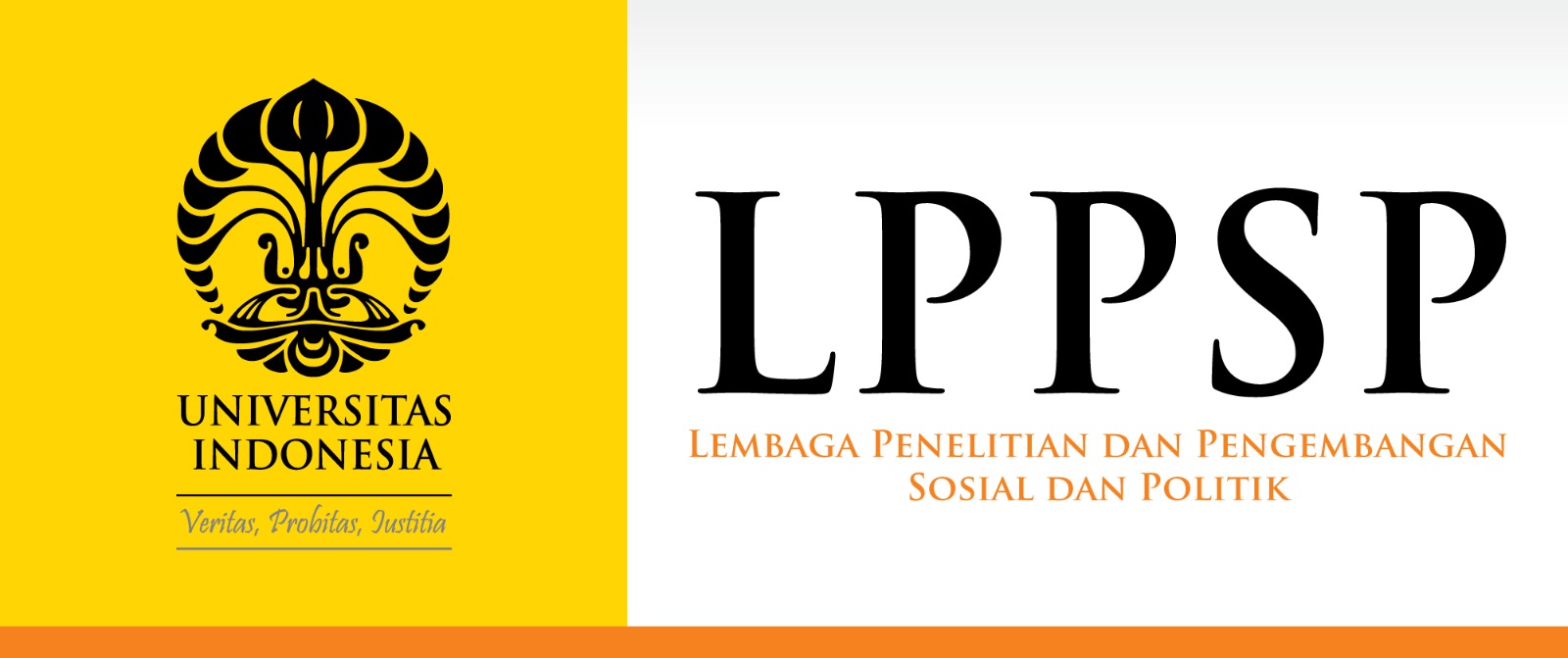JURNAL KOMUNIKASI INDONESIA
Abstract
Drawing on an online meditation community mentored by Samanera Abhisarano in Indonesia, this study explores how the members use digital media to engage in religious practices and teachings. The data were collected through multisited digital ethnographic fieldwork conducted from December 2021 to July 2022. During this period, we immersed ourselves in the WhatsApp group and the Zoom virtual room of the community. In addition to participating in their online activities and interviewing five community members remotely, we conducted on-site fieldwork at the temple where the mentor lives and organized a face-to-face in-depth interview with him. Employing Hjarvard’s theory of mediatization of religion, we analyzed how Buddhist teaching and practices were mediatised through the intensive use of digital media in religious environments. We argue that digital media have, to some extent, transformed the routine of this community in terms of performing religious activities. The finding supports Hjarvard’s argument that mediatization of religion is a process in which the media have taken over some roles of religious authority and transformed the way society interacts with religion.
Bahasa Abstract
Beranjak dari komunitas meditasi daring yang dibimbing oleh Samanera Abhisarano di Indonesia, penelitian ini mengeksplorasi bagaimana anggotanya menggunakan media digital untuk terlibat dalam praktik dan ajaran keagamaan. Data diperoleh melalui multi-sited digital ethnographic fieldwork yang dilakukan pada Desember 2021 hingga Juli 2022. Selama periode tersebut, kami masuk ke dalam grup WhatsApp dan ruang virtual Zoom komunitas tersebut. Selain berpartisipasi dalam aktivitas daring dan mewawancarai lima anggota komunitas dari jarak jauh, kami melakukan fieldwork di wihara tempat mentor meditasi menetap serta mengatur wawancara mendalam tatap muka dengannya. Dengan menggunakan teori mediatisasi agama Hjarvard, kami menganalisis bagaimana ajaran dan praktik Buddhis termediatisasi melalui penggunaan media digital secara intensif di lingkungan keagamaan. Kami berpendapat bahwa media digital, sampai batas tertentu, telah mentransformasi rutinitas komunitas ini dalam melakukan kegiatan keagamaan. Temuan ini mendukung argumen Hjarvard bahwa mediatisasi agama adalah sebuah proses yang memungkinkan media mengambil alih beberapa peran otoritas agama dan mengubah cara masyarakat berinteraksi dengan agama.
References
Addo, G. (2020). Worshipping on Zoom: A digital ethnographic study of African Pentecostals churches and their Liturgical practices during Covid-19. [Master’s Thesis, Malmö University]. https://www.diva-portal.org/smash/record.jsf?pid=diva2%3A1483321&dswid=6518
Asosiasi Penyelenggara Jasa Internet Indonesia (APJII). (2020). Laporan survei internet APJII 2019 – 2020 (Q2). https://apjii.or.id/survei.
Badan Pusat Statistik (BPS). (2010). Sensus Penduduk 2010. Retrieved from https://sp2010.bps.go.id/index.php/site?id=0000000000&wilayah=Indonesia
Campbell, H. (2007). Who’s got the power? Religious authority and the Internet. Journal of computer-mediated communication, 12(3), 1043-1062. https://doi.org/10.1111/j.1083-6101.2007.00362.x
Campbell, H. A. (2010a). Religious authority and the blogosphere. Journal of Computer-Mediated Communication, 15(2), 251-276. https://doi.org/10.1111/j.1083-6101.2010.01519.x
Campbell, H. A. (2010b). When Religion Meets New Media. New York: Routledge.
Campbell, H.A. (Ed.) (2012). Digital Religion: Understanding Religious Practice in New Media Worlds. Routledge.
Campbell, H. A. (2016). Framing the human-technology relationship: How Religious Digital Creatives engage posthuman narratives. Social Compass, 63(3), 302-318. https://doi.org/10.1177/0037768616652328
Campbell, H.A., & Sheldon, Z. (2022). Community. In H.A. Campbell & R. Tsuria (Eds.), Digital religion: Understanding religious practice in digital media (pp.71-86). Routledge.
Creswell, J.W. (2007). Qualitative inquiry and research design: Choosing among five approaches. Sage Publications.
Denzin, N. K., & Lincoln, Y. S. (Eds.). (2011). The Sage Handbook of Qualitative Research. Sage.
Denzin, N. K., & Lincoln, Y. S. (2018). The Sage Handbook of Qualitative Research (5th Ed.). Sage. https://doi. org/10.1007/s11229-017-1319-x.
Edlom, J., & Karlsson, J. (2021). Keep the fire burning: Exploring the hierarchies of music fandom and the motivations of superfans. Media and Communication, 9(3), 123-132. https://doi.org/10.17645/mac.v9i3.4013
Eisenlohr, P. (2017). Reconsidering mediatization of religion: Islamic televangelism in India. Media, Culture & Society, 39(6), 869-884. https://doi.org/10.1177/0163443716679032
Fakhruroji, M. (2015). Mediatization of religion in “texting culture”: self-help religion and the shifting of religious authority. Indonesian Journal of Islam and Muslim Societies, 5(2), 231-254. https://doi.org/10.18326/ijims.v5i2.231-254
Fakhruroji, M. (2018). Digitalizing Islamic lectures: Islamic apps and religious engagement in contemporary Indonesia. Contemporary Islam, 13(2), 201-215. https://doi.org/10.1007/s11562-018-0427-9
Fakhruroji, M. (2019). Muslims learning Islam on the internet. In M. Woodward & R. Lukens-Bull (Eds.), Handbook of contemporary Islam and Muslim lives (pp. 1-17). Springer.
Fakhruroji, M. (2021a). Mediatisasi Agama: Konsep, Kasus, dan Implikasi. Lekkas.
Fakhruroji, M. (2021b). Texting condolences on WhatsApp as a mediatized mourning practice. Human Behavior and Emerging Technologies, 3(5), 677-686. https://doi.org/10.1002/hbe2.309
Geertz, C. (1973). The interpretation of cultures: selected essays. Basic Books.
Giaxoglou, K. (2014). 'RIP man... u are missed and loved by many': entextualising moments of mourning on a Facebook Rest in Peace group site. Thanatos, 3(1), 10-28.
Gibson, W. J. & Brown, A. (2009). Working with Qualitative Data. Sage Publications.
Giorgi, A. (2019). Mediatized Catholicism: Minority voices and religious authority in the digital sphere. Religions, 10(8), 463. https://doi.org/10.3390/rel10080463
Golan, O., & Martini, M. (2018). Digital pilgrimage: Exploring Catholic monastic webcasts. The Communication Review, 21(1), 24-45. https://doi.org/10.1080/10714421.2017.1416795
Grozman, E. (2021). Churchdemic: A digital ethnographic study of religious online practices in Hillsong church Sweden during Covid-19. [Master’s Thesis, Malmö University]. https://mau.diva-portal.org/smash/record.jsf?pid=diva2%3A1579389&dswid=3858
Hazim, H., & Musdholifah, N. (2021). Mediatization of Islam; The Case of The Indonesian Muslims in Hungary. The Journal of Society and Media, 5(1), 42-57. https://doi.org/10.26740/jsm.v5n1.p42-57
Hjarvard, S. (2008). The mediatization of religion: A theory of the media as agents of religious change. Northern Lights: Film & Media Studies Yearbook, 6(1), 9-26. https://doi.org/10.1386/nl.6.1.9_1
Hjarvard, S. (2011). The mediatisation of religion: Theorising religion, media and social change. Culture and religion, 12(02), 119-135. https://doi.org/10.1080/14755610.2011.579719
Hjarvard, S. (2015). Mediatization and the changing authority of religion. Media, Culture & Society, 38(1), 8-17. https://doi.org/10.1177/0163443715615412
Hepp, A. (2009). Differentiation: Mediatization and Cultural Change. In K. Lundby (Ed.), Mediatization: Concept, changes, consequences (pp. 139-158). Peter Lang.
Hutchings, T. (2021). Community: Stillness on the hillside. In H. A. Campbell & R. Tsuria, Digital Religion (2nd ed., pp. 186–195). Routledge. https://doi.org/10.4324/9780429295683-17
Hojsgaard, M. T., & Warburg, M. (2005). Introduction: Waves of research. In M. Hojsgaard & M. Warburg, Religion and cyberspace (pp. 10-20). Routledge.
Jansson, A. (2013). Mediatization and social space: Reconstructing mediatization for the transmedia age. Communication Theory, 23(3), 279-296. https://doi.org/10.1111/comt.12015
Kemp, S. (2021, November 4). Digital in Indonesia: All the statistics you need in 2021. DataReportal. Retrieved January 10, 2022, from https://datareportal.com/reports/digital-2021-indonesia
Khumairoh, I. (2018). Ayo Menikah (Muda)!: Mediatisasi Ajaran Islam di Media Sosial. Umbara, 2(1). https://doi.org/10.24198/umbara.v2i1.15671
Kołodziejska, M., & Neumaier, A. (2017). Between individualisation and tradition: Transforming religious authority on German and Polish Christian online discussion forums. Religion, 47(2), 228-255. https://doi.org/10.1080/0048721X.2016.1219882
Liao, P. R. (2013). Imagining ‘human Bodhisattva’ via televisual discourse: media platform of the Tzu-Chi organisation. Contemporary Buddhism, 14(2), 284-297. https://doi.org/10.1080/14639947.2013.832083
Lövheim, M., & Lundby, K. (2013). Mediated religion across time and space: A case study of Norwegian newspapers. Nordic Journal of Religion & Society, 26(1), 25-44. https://doi.org/10.18261/ISSN1890-7008-2013-01-0
Lövheim, M., & Campbell, H. A. (2017). Considering critical methods and theoretical lenses in digital religion studies. New Media & Society, 19(1), 5-14. https://doi.org/10.1177/1461444816649911
Lynch, G. (2011). What we can learn from the mediatisation of religion debate? Culture and Religion, 12(2), 203-210. https://doi.org/10.1080/14755610.2011.579714
Marcus, G. E. (1995). Ethnography in/of the world system: The emergence of multi‐sited ethnography. Annual Review of Anthropology, 24(1), 95–117. https://doi.org/10.1146/annurev.an.24.100195.000523
Mukarom, Z., & Rosyidi, I. (2020). Mediatization of Da'wah in Disruption Era: Study of Islamic Da'wah in Social Media. American Journal of Humanities and Social Sciences Research (AJHSSR), 4(9), 190-202.
Mukherjee, U. (2022). Live-streaming the goddess in the times of COVID-19: a digital ethnography of diasporic Durga Puja festivals in pandemic Britain. Religion, 52(2), 231-249. https://doi.org/10.1080/0048721X.2022.2051802
Neuman, W.L. (2013). Social Research Methods: Qualitative and Quantitative Approaches. Pearson Education Limited.
Pink, S., Horst, H., Postill, J., Hjorth, L., Lewis, T., & Tacchi, J. (2016). Digital Ethnography: Principles and Practice. Sage.
Przywara, B., Adamski, A., Kiciński, A., Szewczyk, M., & Jupowicz-Ginalska, A. (2021). Online Live-Stream Broadcasting of the Holy Mass during the COVID-19 Pandemic in Poland as an Example of the Mediatisation of Religion: Empirical Studies in the Field of Mass Media Studies and Pastoral Theology. Religions, 12(4), 261. https://doi.org/10.3390/rel12040261
Ronkin, N. (2022, June 1). Abhidharma. Stanford Encyclopedia of Philosophy. Retrieved August 7, 2022, from https://plato.stanford.edu/entries/abhidharma/
Setianto, Y. P. (2015). Mediatization of religion: How the Indonesian Muslim diasporas mediatized Islamic practices. Journal of Media and Religion,14(4), 230-244. https://doi.org/10.1080/15348423.2015.1116268
Setianto, Y. P. (2016). Media use and mediatization of transnational political participation: The case of transnational Indonesians in the United States [Doctoral dissertation, Ohio University].
Slama, M. (2018). Practising Islam through social media in Indonesia. Indonesia and the Malay World, 46(134), 1-4. https://doi.org/10.1080/13639811.2018.1416798
Sukandar, R. (2007). Negotiating post-conflict communication: a case of ethnic conflict in Indonesia [Doctoral dissertation, Ohio University]. https://etd.ohiolink.edu/acprod/odb_etd/etd/r/1501/10?clear=10&p10_accession_num=ohiou1178895788
Ummah, A. H., Khatoni, M. K., & Khairurromadhan, M. (2020). Podcast sebagai strategi dakwah di era digital: Analisis peluang dan tantangan. Komunike, 12(2), 210-234. https://doi.org/10.20414/jurkom.v12i2.2739
Varis, P. (2016). Digital Ethnography. In A. Georgakopoulou & T. Spilioti, The Routledge Handbook of Language and Digital Communication (pp. 55-68). Routledge.
Yin, R. K. (2015). Qualitative Research from Start to Finish. Guilford Publications.
Yin, R. K. (2018). Case Study Research and Applications: Design and Methods. SAGE Publications.
Recommended Citation
Wirawan, Wirawan and Sukandar, Rudi
(2024)
"Transforming WhatsApp and Zoom into Religious Space: A Digital Ethnography of an Online Meditation Community in Indonesia,"
JURNAL KOMUNIKASI INDONESIA: Vol. 13:
No.
2, Article 3.
DOI: 10.7454/jkmi.v13i2.1243
Available at:
https://scholarhub.ui.ac.id/jkmi/vol13/iss2/3
Included in
Gender, Race, Sexuality, and Ethnicity in Communication Commons, International and Intercultural Communication Commons, Social Influence and Political Communication Commons




